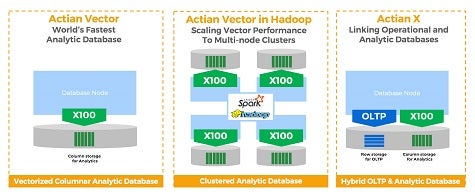One upon a time, the performance of an analytics application was not nearly as important as it is today. Historically, most analytics applications were focused on historical events so a fast database was something nice to have. But as analytics now gets injected into every transaction in real time, the performance capabilities of the underlying database are now critical.
Actian this week moved to accelerate the performance of analytics applications accessing data from the open source Apache Spark in-memory computing framework by layering it on top of a vector processing engine it originally developed to drive a columnar database.
John Bard, vice president of product marketing for Actian, says by adding support for Apache Spark to Actian Vector in Hadoop (VectorH), the company is making it possible to drive up utilization rates of Intel processors running Hadoop and Spark. Today, most implementations of Hadoop and Spark on x86 servers have utilization rates of clusters in the low teens in terms of percentage. Because Actian employs extensions to the instruction set for x86 processors made by Intel, the utilization rate for analytics applications can now be several orders of magnitude greater.
“We can drive utilization rates up to 90 percent range,” says Bard.
With more IT organizations needing to process analytics in parallel to transactions to drive actionable insights in real time, Bard says, organizations are looking for ways to accelerate the performance of applications based on open source technologies such as Hadoop and Spark.
Naturally, there are a lot of ways to drive analytics in real time. But in terms of cost, most organizations are going to gravitate toward x86-based platforms. The challenge is finding a way to maximize the utilization rates of those servers to their fullest extent.



